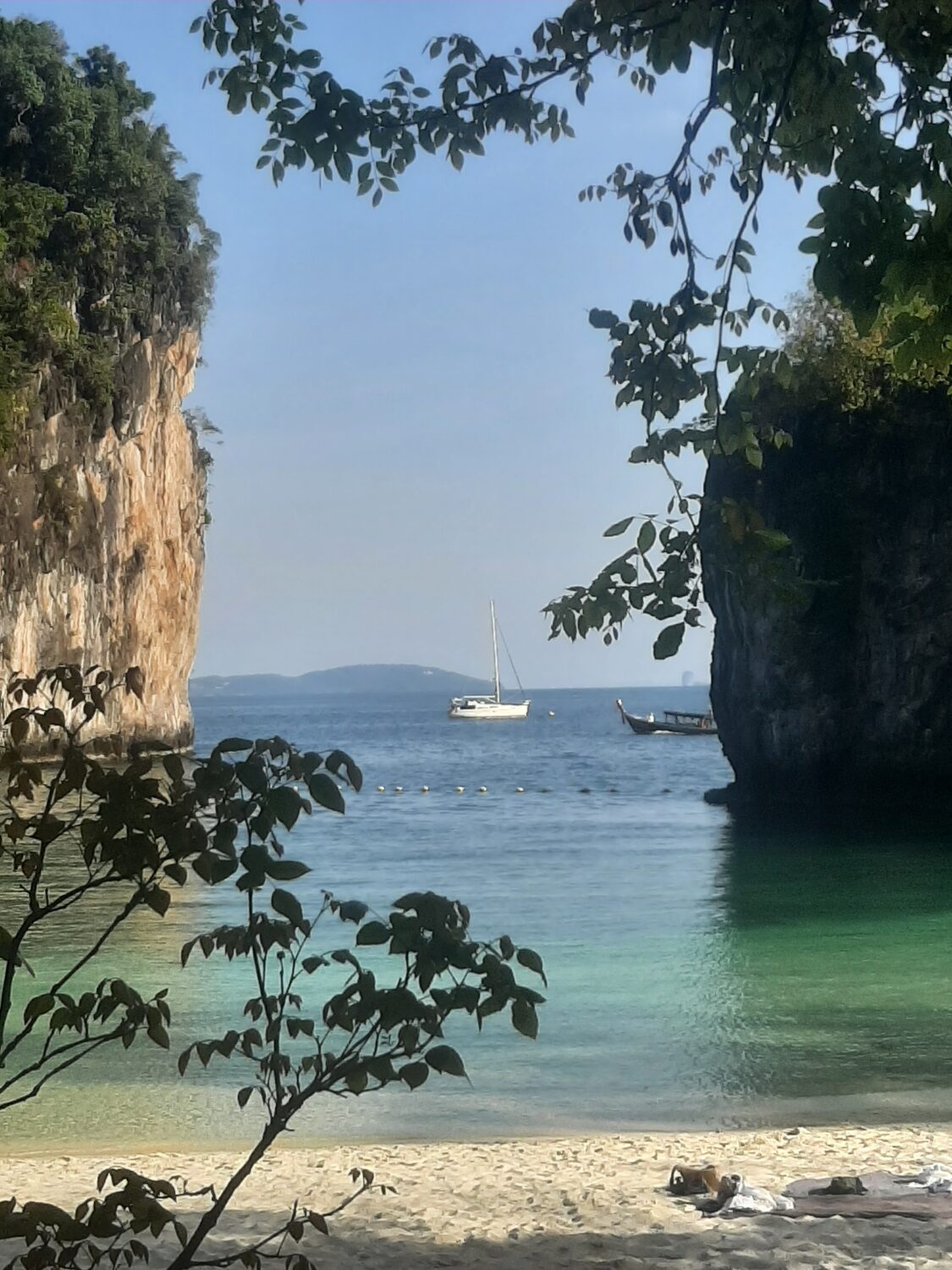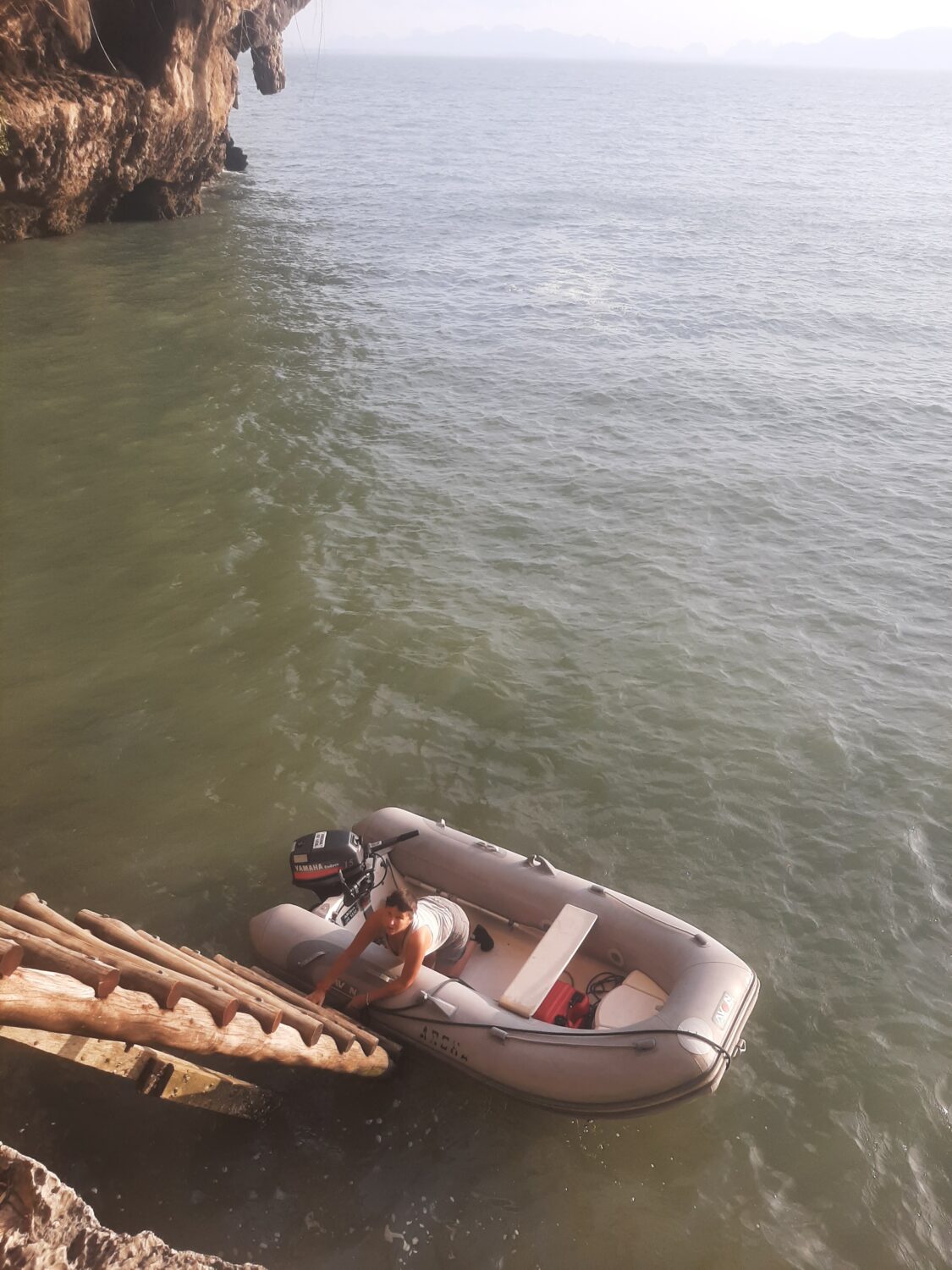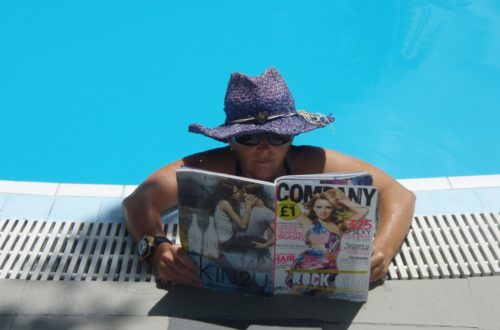
Life Afloat
We’ve become quite comfortable on board our floating home, Aroha. It’s funny thinking that we’ve owned her for about sixteen years and apart from our 2009 six-month circuit from Dubai to The Maldives, Sri Lanka and Chagos, this is the first time we’re experiencing her in this way. We’ve had our fair share of weekends away from her old Dubai base, ocean passages of several weeks, and living on board in marinas in India and Thailand, but living on board for an extended period – hopping from anchorage to anchorage – is a new experience for us.
She is very well designed and makes the most of a small space, and we’ve optimised many systems over the years to allow us extended time off grid. Now that we’ve started cutting back on some of the excesses that found their way on board from our move out of our last Dubai apartment – bikes, paddles boards and kitchen appliances that we never used – we’re starting to feel like there’s a bit more space on board too.

When I started this blog I thought I’d write about similarities between sailboat cruising and land-life, but I’ve come to think that many of the ‘similarities’ I’d come up with were a bit contrived.
Most cruisers think of their dinghy as akin to their car in a land life. Yes, our dinghy “Patches” is a pretty accurate surrogate for our car as it gets us to and from the beach, shops, even the dentist. And in this part of Thailand he frequently takes us on adventures into hongs (caves) and through the mangroves! We bought Patches when we were heading off to the Maldives with two of the kids back in 2009 – then aged ten and thirteen – we wanted something that could comfortably and safely get us around. The result now is that he’s oversized and overpowered for just the two of us, but it kind of feels like we’ve got the Golf GTI instead of the Polo that we would normally be happy with. Having said that, he’s not a young dinghy anymore, so I like to think of him as a classic Mk II Golf.
One of my favourite memories from that trip was coming across a playful pod of spinner dolphins when returning from doing laundry ashore, who played in our bow wave as the kids leaned over the front. This was as close as you’ll ever get to wild dolphins!
The trade off though is that Patches and his outboard motor are quite cumbersome – he only gets lifted onto the foredeck for long passages. For short day sails like we’ve been doing, we tow him behind. At night I lift him out of the water using a halyard from high up the mast. This is to deter theft as well has marine growth on his bottom.


I feel that’s where the land-life similarities end!
We closely monitor our power and water consumption, as we make both! Yes, power from solar (and topped up whenever we run the engine) and drinking water from our 12V watermaker. Just like in Cyril our camper when I was amazed that we could power our electric blanket from the sun’s energy, I’m amazed that we can turn sea water into drinking water thanks to photovoltaic magic! Our watermaker is quite small but even producing about thirty litres an hour can keep up with our typical consumption (about forty litres per day) quite easy. Without it we’d have to fill up at a marina every ten days or so. Even with a modest draw of 110W we tend to make water and other energy intensive activities (like making coffee to refrigerate to iced coffee!) on days where we find ourselves motoring for several hours.

We have 680W of flexible solar panels mounted on our bimini sunshade and spray hood. They’re not as efficient as rigid panels and only just keep up with our daily energy consumption, so we’ve become quite adept at keeping an eye of the house battery level. Cooking a meal on our induction hob can use up to about 10% of our battery capacity (7.2 kWh), and every time we boil the kettle uses about 1%, so what we eat and how many morning coffees we have depends on how sunny it is!
Aroha is quite a light boat for her size (about 6.8 tons empty) and so we notice when our various water and diesel tanks are getting low before the monitors tell us. Imbalanced water tanks (front to back) can make our bed a little low at the pillow end, while the water-diesel balance (left to right) stops the kitchen sink draining properly!


We’ve both slipped out of the habit of practicing yoga and now we’re both getting back into it. I found that the second-biggest flat area on the boat – the deck at the pointy end by the anchor locker – is just long enough for me to lay my mat (and myself) down. Boat movement is kind of amplified here, so it’s not easy doing some of the balancing poses, but I’m enjoying stretching yin-type practices most mornings as the sun comes up. Meanwhile, Helen does her yoga on the biggest flat area on the boat – the bed! It’s funny how it’s pretty much right below my chosen yoga spot – I think we’ve invented “vertical yoga”!
When not serving as a yoga studio, our cabin at the front of the boat is one of my favourite spaces. The side ‘walls’ not only come together to form the pointy end of the boat, but also slope outwards to follow the shape of the hull. With the soft upholstered walls, it creates a really cosy, three-dimensional space. It’s quite warm during the days, but cool enough at night to enjoy the cosiness of a duvet.

Even at anchor the front of the boat pitches up and down a little as little waves pass. There’s times when I’ve been laying in bed and the movement feels almost exactly as if we’re cutting through a calm sea on passage. I have to remind myself that we’re attached to the sea floor and not in fact moving anywhere.
Cruising can be quite isolating. Funnily enough, at the same time it’s also quite easy to chat to people – other cruisers are always happy to exchange tips on anchorages, decipher local puzzles (like how the national park fees work) and the long term cruisers on the best places for maintenance jobs. It seems that everyone keeps pretty much to themselves but it’s easy to break the ice with any common-ground topic. In one anchorage, a French cruiser came over in his dinghy to ask to borrow a tool, then hung around to chat for a good half an hour. I actually think he just wanted a break from his partner and kids!
Over half of the sailboats we see are big cruising catamarans. I’m not a fan of these boats that look more like floating apartments than sailing boats, but I also see the attraction because, well, who doesn’t like all that space and comfort!?


It’s taken a bit of getting used to watching our resource consumption, being aware of the sun’s course across our solar panels, and watching out for changes in the weather and tide, but we’re enjoying the simplicity of Life Afloat in this beautiful part of the world.
Follow and like us to be notified of future blogs!
www.facebook.com/ripeningnicely







One Comment
Mavis
Another lovely read Bryan. I even enjoy the technical info. 🤪